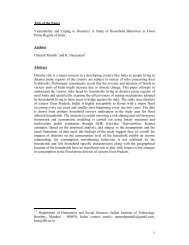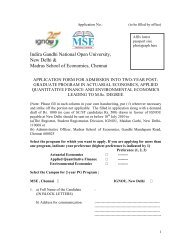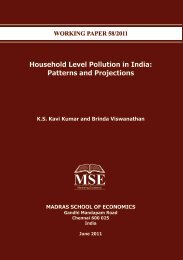Accounting for India's Forest Wealth - Madras School of Economics
Accounting for India's Forest Wealth - Madras School of Economics
Accounting for India's Forest Wealth - Madras School of Economics
- No tags were found...
Create successful ePaper yourself
Turn your PDF publications into a flip-book with our unique Google optimized e-Paper software.
than the consumption <strong>of</strong> the same commodity by the relatively richersection <strong>of</strong> the society.The Task Force has used the fiscal year 2007-08 as the baseyear <strong>for</strong> calculation <strong>of</strong> the revenue neutral rate (RNR). For the purposes<strong>of</strong> estimation <strong>of</strong> the GST base, the Task Force used several alternativeapproaches and estimated the GST base under these methods. Thevarious estimates <strong>of</strong> the GST Base <strong>for</strong> 2007-08 are summarized in Table3. Since the five estimates are different, the Task Force adopts theiraverage <strong>of</strong> Rs. 3125325 crore, as the size <strong>of</strong> the comprehensive GSTbase <strong>for</strong> 2007-08 <strong>for</strong> the purposes <strong>of</strong> estimating the RNR. Since the taxbase <strong>for</strong> both the CGST and the SGST are proposed to be identical, theTask Force uses the same tax base <strong>for</strong> calculating the RNR <strong>for</strong> bothlevies.The Task Force estimated the RNR <strong>for</strong> the CGST at 5.0 percent.Similarly, the RNR in respect <strong>of</strong> the state level taxes which are proposedto be subsumed in the SGST is estimated to be 7.0 percent. Thecombined RNR is estimated to be 12 percent. The Task Force alsorecommended the abolition <strong>of</strong> all entry and Octroi taxes by stategovernments and other sub-national governments.Thus, there are clear differences in the GST rate and its structurebetween what the Empowered Committee is considering and what hasbeen proposed by the Thirteenth Finance Commission and also it‟s TaskForce. These differences arise because <strong>of</strong> the coverage <strong>of</strong> goods andtheir exemption considered by the Empowered Committee compare tothe other two models.Environmental/Demerit GoodsThe 13 th FC Task Force considers the power sector is to be an integralpart <strong>of</strong> the comprehensive GST. The tax regime <strong>for</strong> the power sectorshould be the same as in the case <strong>of</strong> any other normal good. The25


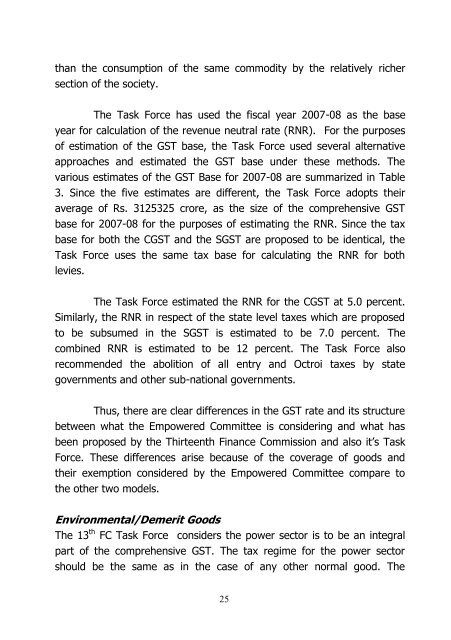
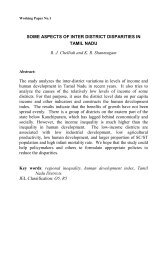
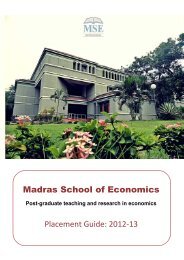
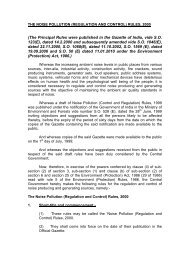
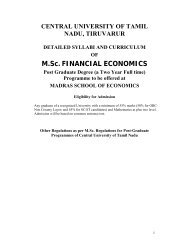
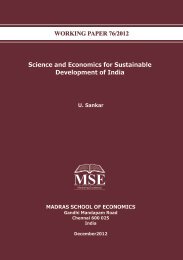
![Curriculum Vitae [pdf] - Madras School of Economics](https://img.yumpu.com/49878970/1/190x245/curriculum-vitae-pdf-madras-school-of-economics.jpg?quality=85)
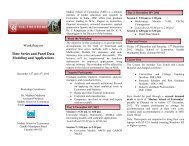
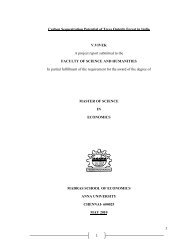
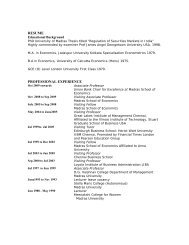
![Curriculum Vitae [pdf] - Madras School of Economics](https://img.yumpu.com/48715201/1/184x260/curriculum-vitae-pdf-madras-school-of-economics.jpg?quality=85)
